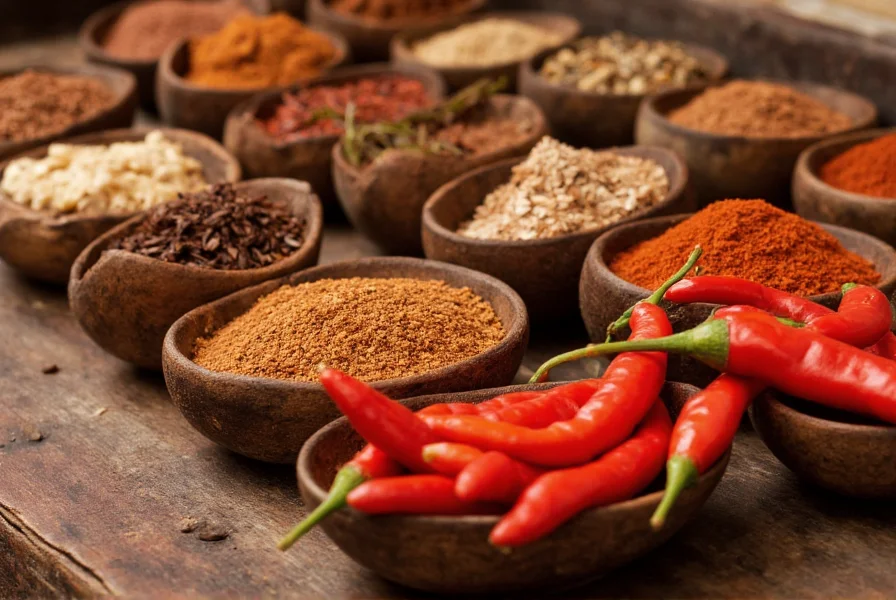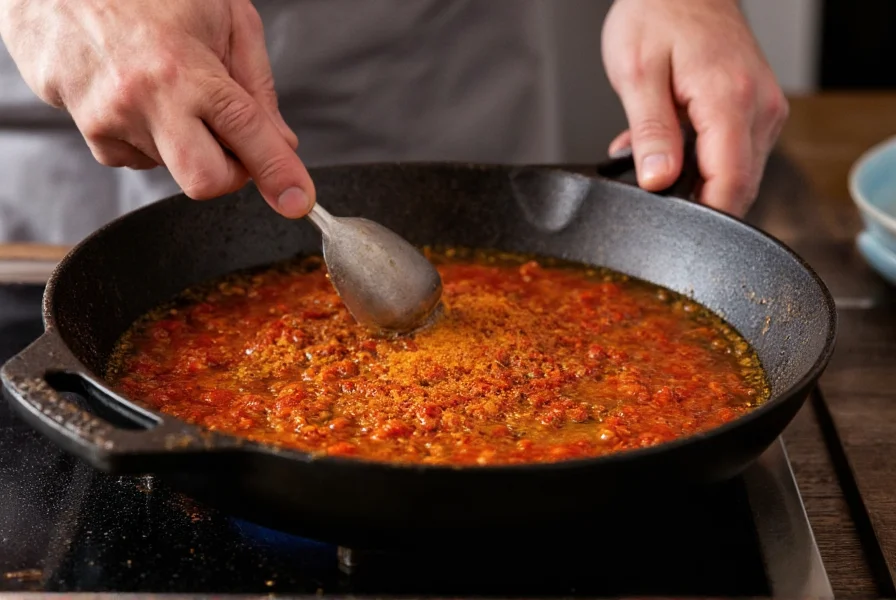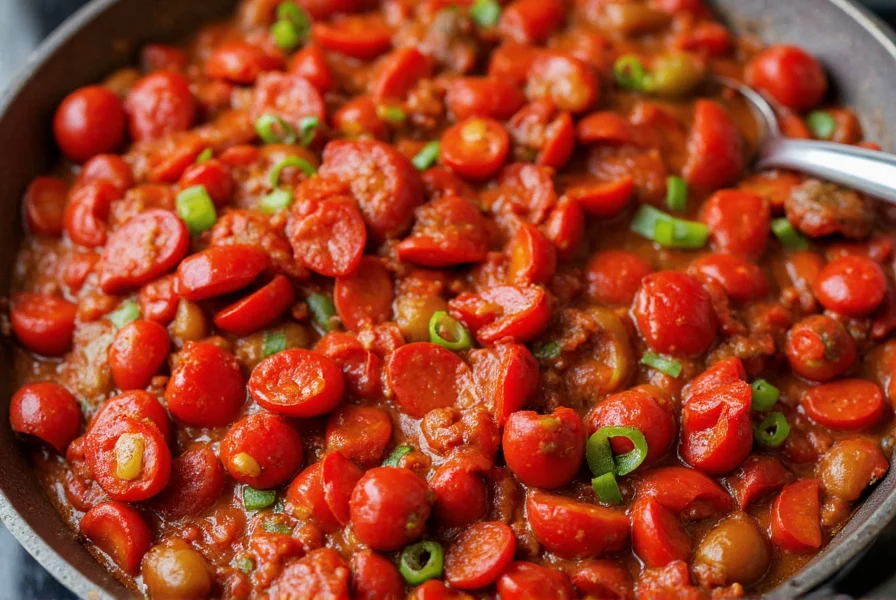Understanding the composition and proper use of chili mix can transform your cooking from ordinary to extraordinary. This versatile seasoning blend serves as the flavor foundation for countless dishes beyond traditional chili con carne. Whether you're preparing a quick weeknight meal or planning a weekend cooking project, knowing how to select and utilize chili mix effectively will elevate your culinary results.
Essential Components of Quality Chili Mix
While recipes vary, authentic chili mix maintains certain core elements that create its distinctive flavor profile. The balance between heat, earthiness, and smokiness determines the quality of any chili seasoning blend.
| Primary Ingredient | Flavor Contribution | Typical Percentage |
|---|---|---|
| Chili Powder | Base heat and earthy flavor | 35-45% |
| Ground Cumin | Earthy, warm undertones | 20-25% |
| Garlic Powder | Savory depth | 10-15% |
| Onion Powder | Sweetness and complexity | 8-12% |
| Paprika | Color and mild sweetness | 5-10% |
| Cayenne Pepper | Additional heat (adjustable) | 2-5% |
Regional Variations in Chili Mix Formulations
Chili mix isn't one-size-fits-all; regional preferences have created distinct styles across North America. Understanding these differences helps you select or create the perfect blend for your culinary needs.
Texas-style chili mix emphasizes pure chili pepper varieties with minimal additional spices, often excluding cumin entirely. This approach highlights the complex flavors of different dried chilies like ancho, guajillo, and pasilla. In contrast, New Mexico chili mix incorporates local red and green chilies with a touch of oregano, creating a brighter, fruitier profile.
The Midwestern and commercial "chili powder" blends most Americans recognize contain a more balanced spice profile with prominent cumin, garlic, and onion notes. These versions work well for quick preparations where building flavor from scratch isn't practical.

Homemade vs. Store-Bought Chili Mix
Creating your own chili mix offers significant advantages over commercial blends, though store-bought options provide convenience for busy cooks.
Benefits of homemade chili mix:
- Fresher flavors with vibrant aroma
- Customizable heat level and flavor balance
- No anti-caking agents or unnecessary fillers
- Ability to adjust for dietary restrictions
- Cost-effective for frequent users
When purchasing commercial chili mix, check the ingredient list carefully. Many popular brands contain significant amounts of salt, sugar, or wheat flour as fillers. For those seeking authentic flavor without additives, specialty brands focusing on pure spice blends provide better options than generic supermarket varieties.
Mastering Cooking Techniques with Chili Mix
How you incorporate chili mix into your cooking significantly impacts the final dish. Professional chefs employ specific techniques to maximize flavor development.
Blooming spices in oil before adding liquids unlocks deeper flavors. Heat 1-2 tablespoons of oil in your pot, add the chili mix, and stir constantly for 30-60 seconds until fragrant. This process, called "toasting," activates the essential oils in the spices, creating a more complex flavor foundation.
For slow cooker recipes, add chili mix during the last hour of cooking to preserve volatile flavor compounds that dissipate during long cooking times. In stovetop preparations, incorporate the mix after browning meat but before adding liquids to allow proper flavor integration.

Creative Applications Beyond Traditional Chili
While chili mix excels in classic chili recipes, its versatility extends to numerous other culinary applications that surprise many home cooks.
Use chili mix to elevate:
- Rub for grilled meats (especially beef, pork, and chicken)
- Flavor booster for roasted vegetables
- Secret ingredient in tomato-based pasta sauces
- Seasoning for homemade cornbread or biscuits
- Enhancement for bean dips and spreads
- Flavor component in Bloody Mary cocktails
When experimenting with chili mix in non-traditional applications, start with smaller amounts (1/2 to 1 teaspoon per serving) and adjust to taste. The robust flavor can overwhelm delicate dishes if used excessively.
Proper Storage for Maximum Freshness
Spice blends lose potency over time, but proper storage extends their shelf life significantly. Store chili mix in an airtight container away from heat, light, and moisture.
Homemade chili mix maintains optimal flavor for 3-4 months when stored properly, while commercial blends typically remain fresh for 6-12 months. To test freshness, rub a small amount between your fingers and smell it. If the aroma is weak or musty, it's time to replace your blend.
For extended storage, consider freezing your chili mix in ice cube trays covered with oil, then transferring the frozen cubes to freezer bags. This method preserves flavor for up to 6 months and provides convenient portions for recipes.
Frequently Asked Questions
What's the difference between chili mix and chili powder?
Chili powder is a single ingredient made from ground dried chilies, while chili mix combines chili powder with other spices like cumin, garlic powder, and oregano. Chili mix creates complete flavor in one step, whereas chili powder requires additional seasoning to achieve balanced flavor.
Can I substitute chili mix for chili powder in recipes?
Yes, but with adjustments. For every tablespoon of chili powder called for, use 1½ tablespoons of chili mix and reduce other spices accordingly. Since chili mix contains additional seasonings, you'll need to decrease added cumin, garlic powder, and oregano to avoid overpowering the dish.
How can I make my chili mix less spicy without losing flavor?
To reduce heat while maintaining flavor, increase the proportion of mild ingredients like paprika and cumin while decreasing cayenne. Adding a small amount of cocoa powder (1-2 teaspoons per cup of mix) also balances heat with rich depth without altering the fundamental chili flavor profile.
Does chili mix contain gluten or common allergens?
Pure spice blends are naturally gluten-free, but some commercial chili mixes add flour as an anti-caking agent. Always check labels if you have dietary restrictions. Homemade chili mix using only spices guarantees no hidden allergens. Cross-contamination can occur in facilities that process multiple products, so those with severe allergies should verify manufacturing practices.











 浙公网安备
33010002000092号
浙公网安备
33010002000092号 浙B2-20120091-4
浙B2-20120091-4